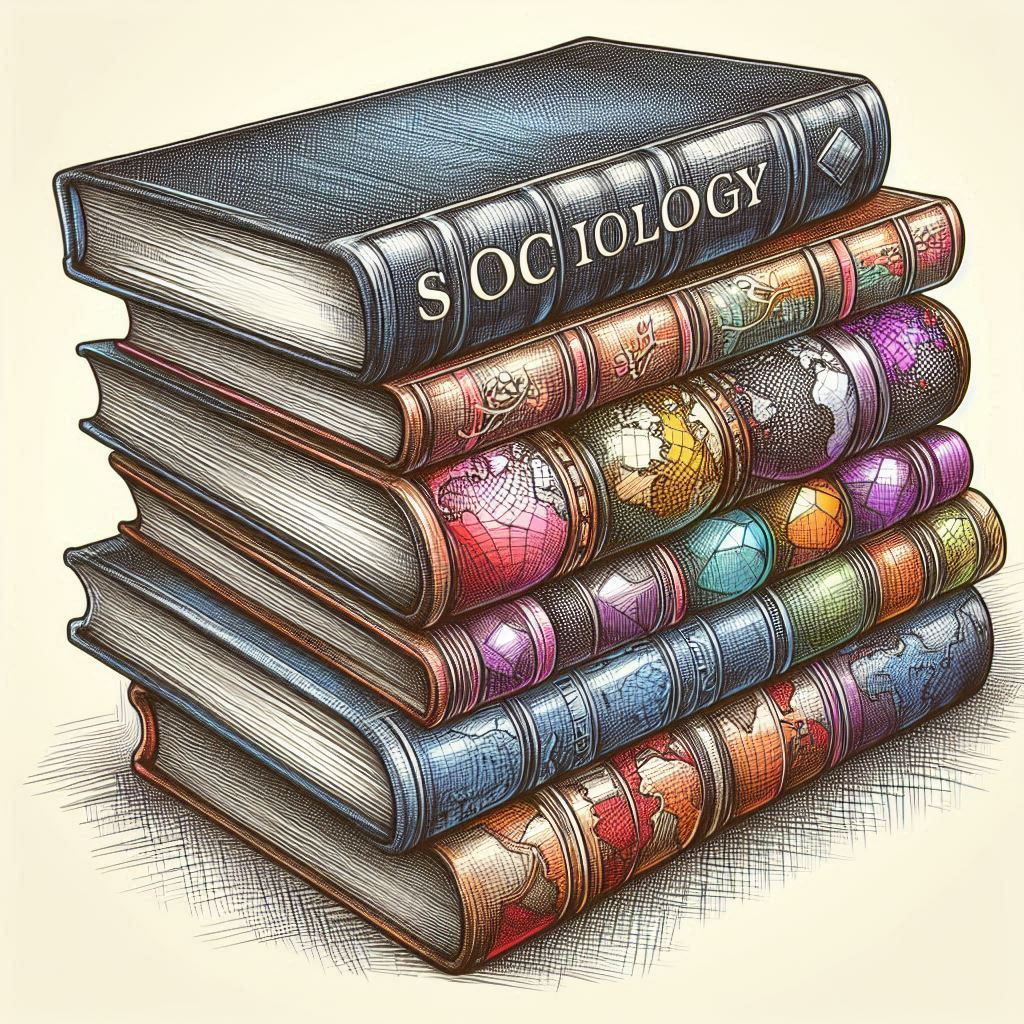The modern nation-state, with a centralized structure and elaborate bureaucracy, is a relatively recent human innovation (Bottomore 1979) having been in existence for only about 6,000 years (Berberoglu 1990).
Prior to the rise of the state, authority was determined by kinship relations or religious rituals with no specific group charged with decision-making responsibility (Bottomore 1979). For example, the decision to make war or peace with a neighboring tribe might be made by all the adult members or by only some members, although one person is the undisputed leader. Bureaucracy and rationalization, or the adoption of consistent practice and procedures rather than capricious decision making, are the hallmarks of the modern nation-state. While the concepts of nation and state are linked, there are important distinctions.
Sociologists examine the state in relation to the society as a whole and not in Isolation.
Meaning of the State:
Max Weber contends that “a state is a human community that (successfully) claims the monopoly of the legitimate use of physical force within a given territory (Gerth and Mills 1946). So, only the state has right to use force to achieve its ends. The use of force by other individuals and organisation (not sponsored by state) can be categorised as violence or crime.
The state, then, has the ability to make and enforce laws and is run by those occupying positions in the state bureaucracy (Nagengast 1994). In short, the state has power over the lives of its citizens as well as persons currently residing within its borders.
Attributes of State:
Compulsory: Weber views the state as “a compulsory association with a territorial basis” (Heydebrand 1994). The compulsory nature of the state is clear in that short of revolution, we have no choice but to submit to state authority as long as we physically reside within its borders. For example, a U.S. citizen traveling in Russia cannot refuse to obey Russia’s laws because he or she is under Russian jurisdiction.
Monopoly: The state has a monopoly on the use of legitimate force within its borders (Runciman 1978). This does not mean that the state must use force. State domination is evidenced by the ability to have commands followed without the need to resort to coercion (Skrentny 2006). Recall the earlier metaphor of parent for understanding the state. Parents do not always need to threaten children with a spanking for compliance. Children usually comply because they accept the right of parents to punish even if they do not agree with the
punishment.
As described by Michael Mann (1988), there are two types of state power: despotic and infrastructural. Despotic power is the use of physical force or coercion administered by the military or police as agents of the state. Infrastructural power is a more modern power and refers to the ability of the state to influence and control major spheres of our lives without using physical force. Consistent with a Weberian view of state (Gerth and Mills 1946), Robert Dahl (1963) argues that only the state decides who can use force, under what circumstances, and the type of force that is allowed. The state does not have to use force nor does a monopoly mean that only the state can use force, however, only the state decides when force is permissible.
Legitimacy: A driver obeys a police officer not only because a police officer carries a gun but also because citizens recognize the right of a police officer to make traffic stops on behalf of the state. For Weber, “If the state is to exist the dominated must obey the authority claimed by the powers that be” (Gerth and Mills 1946). However, the force that is being used must be “permitted or prescribed by the regulations of the state” (Runciman 1978). What is defined as permissible varies between nations and, within the United States, between jurisdictions. What is constant across all is that only the state determines legitimacy.
In Texas, one is allowed to use lethal or deadly force to protect one’s life and, under some circumstances, property, including that of one’s neighbors (Texas Penal Code). In other jurisdictions, lethal force may be used only to protect one’s life and the danger must be imminent. This means that within the United States, someone who kills an intruder may be treated differently depending upon local laws. Weber observed that fathers sometimes physically discipline their children. Their ability to do so is limited by the state. Some modern nation-states severely restrict corporal punishment to prevent child abuse (e.g., Sweden). In the United States, parents cross the line between discipline and abuse when physical punishment leaves a mark such as a bruise or a handprint (Wallace 1999).
Citizens believing that the state has overstepped its boundaries may take action against the state through civil disobedience, protest, or even revolution. Ultimately, it is collective society that delegates legitimacy to the state and this means that it can also be taken away, as was the case with the American Revolution. Grievances must be extreme before groups will take on a more powerful state, yet, antistatist movements are on the rise and weaken not only a specifically targeted state but also all states (Wallerstein 2003).
Agencies of the State:
The state is not a single entity but a network of organizations. Following the lead of Tilly and Skocpol, Ann Orloff describes the state as “potentially [emphasis Orloff’s] autonomous sets of coercive, extractive, judicial, and administrative organizations controlling territories and the populations within them” (1993). Because the state is made up of various units with various degrees of autonomy, Bottomore (1979) reminds us that the state is not a unified force. For example, the United States has an independent judiciary where judges make decisions that may conflict with the policies of the executive branch.
Government
The state is often confused with government because the latter speaks on behalf of the state (Miliband 1993). Government is “the specific regime in power at any one moment” (Alford and Friedland 1985). In the United States, power switches back and forth between political parties with political appointees occupying important positions of power, yet government is less permanent because the state endures regardless of which party captures the presidency (Olsen and Marger 1993; Stepan 1988).
Administration or Bureaucracy
Administration is the sphere that manages the day-to-day affairs of the state. Political appointees head U.S. departments such as State and Homeland Security, but civil servants remain regardless of which political party is in power. Richard Clarke, a former counterterrorism czar for both former U.S. presidents Bill Clinton and George W. Bush, served seven different presidents in a variety of posts.
Military and Police
Kourvetaris (1997) contends that there is little consensus among political sociologists regarding whether the military and police are considered part of the state
system or a separate institution. Given that both act at the behest of the state and are under the
authority of a political leader who occupies a government position (e.g., mayor, governor, or
president), it seems reasonable to consider both aspects of the state. Miliband agrees, calling
police and military forces as the branch concerned with the “management of violence” (1993). Skocpol’s (1993) definition of the state also includes the police and military. Finally,
Tilly (1975) argues that the repressive features of the state including taxation, policing, and the
armed forces were historically essential for the making of a strong state. For an authoritarian
or nondemocratic state, the military either controls the state or is in charge of its coercive
capabilities (Stepan 1988). For democracies, there is concern regarding the role of military and intelligence organizations. Nations need a strong defense, but when the military and state security apparatus is not accountable to civilian authorities or when “security organizations … attempt to act with secrecy and autonomy, democratic control of policy is severely challenged” (Stepan 1988). While Stepan was writing in the aftermath of the Iran–Contra scandal, the current “war on terror” waged by the United States and its allies against Al Qaeda renews these concerns because of the more controversial aspects of the USA PATRIOT (Uniting and Strengthening America by Providing Appropriate Tools Required to Intercept and Obstruct Terrorism) Act. In the United States, an independent judiciary is a check on other components of the state, but Stepan also advises the development of the capacity within civil society “to speak with knowledge and authority on complex matters of geopolitics, arms, security, and peace” (1988). Political sociology is ideally suited to prepare individuals who take seriously Stepan’s call to action.
Judiciary
Skrentny (2006) argues that the United States is a legal state with political actors using the law and courts to meet political ends. Courts have a substantial impact through policy making regardless of whether jurists are conservative or liberal. Not only is the U.S. judiciary independent from politicians heading the government, but it also acts to protect persons under state control. A recent example is the two U.S. Supreme Court decisions regarding the fate of enemy combatants held at the U.S. Naval base in Guantánamo Bay, Cuba. The Court rejected the position (of the George W. Bush administration) that enemy combatants are beyond the jurisdiction of American courts and allowed detainees the right to challenge their captivity before a federal judge (Gearan 2004; Savage 2008). Sociologists need to pay more attention to the role of both law and the courts in state building and the making of public policy (Skrentny 2006).
Subcentral
Miliband’s fifth element is defined as “an extension of central government and administration, the latter’s antennae or tentacles” (1993). This component not only communicates and administers from the center to the periphery but also functions as the voice of the periphery to the center. Despite centralization, these units are also power centers in and of themselves as they “affect very markedly the lives of the population they have governed” (1993). Miliband does not give specific examples but branch offices of federal agencies fit this category. The FBI, Immigration Customs Enforcement (ICE), and the Department of Justice all have regional offices that not only communicate and administer federal mandates from Washington but also communicate to the same local concerns and issues. These regional offices are examples of “diffusion of control” or having a national presence that is diffused throughout the country (Oszlak 2005).
Subcentral units of government may manifest themselves differently in other democratic societies as a result of cultural differences. One example is a rural village located in central Chhattisgarh (a state of India) that is cut off from the mainstream due to inaccessible roads and the lack of electricity. Residents have little interaction with lower state officials, and what does occur is mediated by the Patel (village chief) or the most powerful village elder who is associated with divine legitimacy or a belief that this individual is chosen by the gods (Froerer 2005). This may place the Patel above the law. For these villagers, their experience with the tentacles of central government is influenced by a figure that is endowed with traditional authority as well as divine legitimacy.
Legislative or Parliamentary
Miliband characterizes the relationship between the legislative body of a state and its administration or the chief executive as both cooperation and conflict. Similar to subcentral units of government, legislative bodies are independent power centers that are often in conflict with the chief executive. Like subcentral units, these bodies also serve a communication function by articulating to the state the needs and concerns of the populations they represent and in addition they communicate information from the center to the periphery.
Explore more Sociology Articles
Buy Political Sociology Book from Amazon


